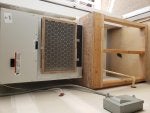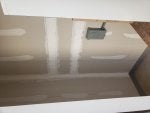Hi All,
I'm in the process of healing from Lyme disease. I just moved out of a very moldy home where the mold was suppressing my immune system. Now I'm in a two year old building where mold counts are very low and everything appears to be spotless. The next part of this journey is keeping it that way.
I want to keep the HVAC system as clean and mold free as possible. It's a small system. Some have recommended the Air Oasis Bipolar 2400 along with electrostatic filters. Others have recommended the iWave. Others have said those products are snake oil, and I should just use UV lights. Others have said none of these work, and I should just keep humidity low.
What do you recommend?
Thank you,
Aaron
I'm in the process of healing from Lyme disease. I just moved out of a very moldy home where the mold was suppressing my immune system. Now I'm in a two year old building where mold counts are very low and everything appears to be spotless. The next part of this journey is keeping it that way.
I want to keep the HVAC system as clean and mold free as possible. It's a small system. Some have recommended the Air Oasis Bipolar 2400 along with electrostatic filters. Others have recommended the iWave. Others have said those products are snake oil, and I should just use UV lights. Others have said none of these work, and I should just keep humidity low.
What do you recommend?
Thank you,
Aaron






